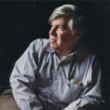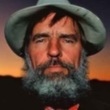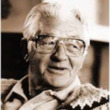Basin and range
(Book)
557.9 MCPHE
1 available
Copies
| Location | Call Number | Status |
|---|---|---|
| Central - Adult Nonfiction | 557.9 MCPHE | Available |
Description
More Details
Notes
Subjects
Also in this Series
Published Reviews
Kirkus Book Review
Peripatetic journalist extraordinary McPhee takes a close, lucid, resonant look at the modern scenery of the western US from the perspective offered by an understanding of geological processes. During the Triassic, some 200 million years ago, northeastern New Jersey was contiguous with northwestern Africa; the alpine Appalachians sprawled across both. As subcrustal forces began to separate the fledgling continents, the rocks faulted and shattered. Some blocks were uplifted, some sank; complicated by upwellings of molten magma, the area became ""basin and range"" country, of which today's remnants are the Palisades, the Newark basin, the Border Fault. McPhee's odyssey takes him, thereafter, along the continent-spanning Route 80--studying exposed landforms and rocks revealed by roadcuts, talking with geologists--toward a modern Basin and Range country: that physiographic territory between eastern California and eastern Nevada, geologically active, mineral-rich, structurally enormously complex. His chief mentor is Princeton geologist Kenneth S. Deffeyes (whose introductory course is familiarly known as ""Rocks for Jocks""). Along the way they discuss: James Hutton, founder of modern geological thought; the pioneers who crossed or died crossing the dry mountains and valleys of the Basin and Range; and, importantly, the recent revolutionary theory of plate tectonics--the notion that the Earth's surface is composed of rocky plates floating on the 200-mile-thick, hot, semisolid mantle. The relative motions of the plates build and drown mountains, open and close oceans, alter climate, affect lifeforms; as McPhee eloquently puts it, ""The summit of Mt. Everest is marine limestone."" His telling comparisons of geology before and after plate tectonic theory are with physics before and after Einstein, biology before and after Darwin. McPhee triumphs in his evocation of geological time. The denizens of mountainous Nevada, assured that their high desert will some day be a subtropical sea, are phlegmatic enough--""It'll be a change to have water here""; but the implications are ominous as well as awesome--""California will be an island. It is just a matter of time."" In his usual spare prose (but in somewhat more than usually demanding scientific terms) McPhee succeeds in conveying the essence and excitement of the geologists' thinking. Copyright ©Kirkus Reviews, used with permission.
Reviews from GoodReads
Citations
McPhee, J. (1981). Basin and range . Farrar, Straus & Giroux.
Chicago / Turabian - Author Date Citation, 17th Edition (style guide)McPhee, John, 1931-. 1981. Basin and Range. New York: Farrar, Straus & Giroux.
Chicago / Turabian - Humanities (Notes and Bibliography) Citation, 17th Edition (style guide)McPhee, John, 1931-. Basin and Range New York: Farrar, Straus & Giroux, 1981.
Harvard Citation (style guide)McPhee, J. (1981). Basin and range. New York: Farrar, Straus & Giroux.
MLA Citation, 9th Edition (style guide)McPhee, John. Basin and Range Farrar, Straus & Giroux, 1981.






































